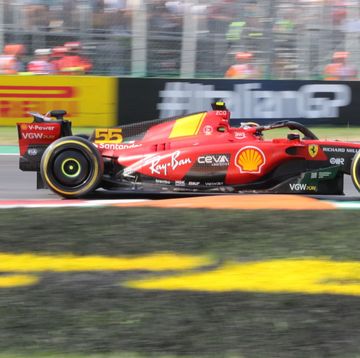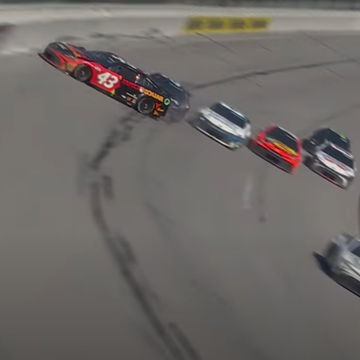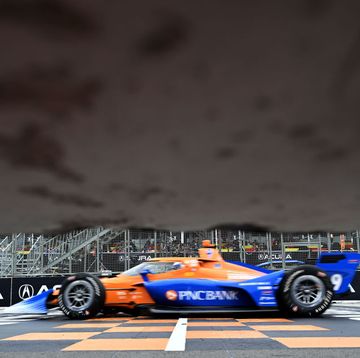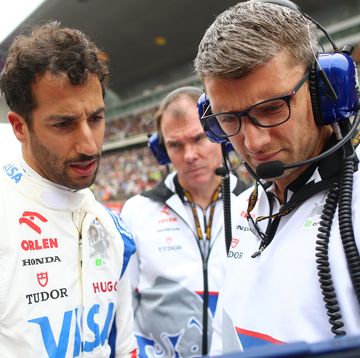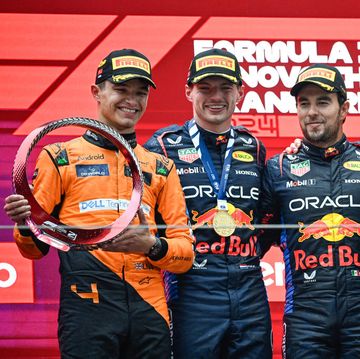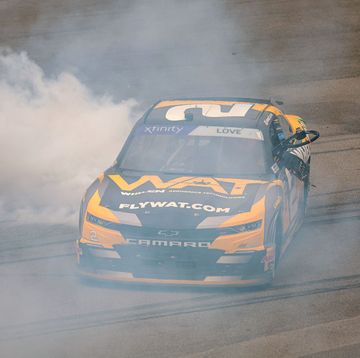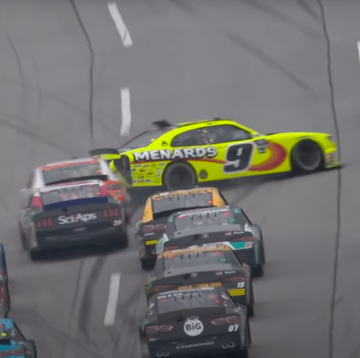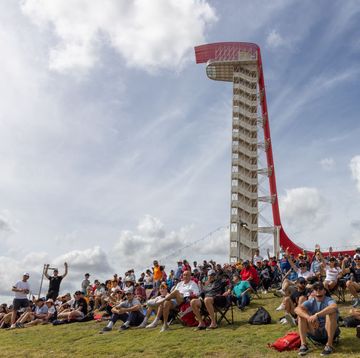Last year's Turkish Grand Prix was one of Lewis Hamilton's greatest drives. The Mercedes W10 was dominant everywhere else, but at Turkey the car built around preserving tires didn't jive with a track too slippery to build temperature the rubber. Hamilton lacked pace in every session leading to the race. But light rains during the race allowed him to unlock a secret: After the treads wore off his intermediate tires, the slick surface underneath was the only tire in the Pirelli arsenal that clicked with the W10 chassis. He won the race that was supposed to be out of his reach by more than 20 seconds, clinching his record-tying seventh world championship.
This year, he has a new challenge. Mercedes chose a 10-place grid penalty to allow Hamilton's car a much-needed new engine, mirroring a move made by Red Bull at the recent race in Sochi, ensuring the Three-Pointed Star's title contender will have fresh power for one of this season's most important races. It makes Turkey something like a play for field position for the team, forcing Hamilton into a recovery drive two days before the race actually begins. Mercedes knows that Hamilton's narrow championship lead only survives the race if he can recover from 11th or worse on the grid on Sunday to pass Max Verstappen. They also know his best chance to win a championship will be to give up that lead by running a smart, conservative race here to a mid-points finish and plan on using the power advantage from switching to a fresh engine later to take wins over Verstappen in the closing races.
But even pulling that off will require Hamilton optimizing his result on Sunday. He starts 11th only if he takes pole for the actual race, but incredible pace from Mercedes on a greatly improved surface at Istanbul Park has put both team and driver in position to make that best-case scenario a reality. If he does so, he'll get the preferred lane for what was once one of the year's wildest standing starts and a serious shot to improve to seventh or eighth by turn 2. The team will have to run a strategy in a dirty air situation that has regularly hurt Mercedes entries over the past few years from there, but Hamilton proved in his victory at Sochi just two weeks ago that in a fast enough car he can effortlessly make up time in short windows of clean track to make net passes when the strategy demands it. A win is not out of the question from 11th, if the team wants it.
If Hamilton does not start from pole, the team has another option. The engine, the internal combustion component of the modern F1 powertrain, is just the most important of many wear pieces inside the car on limited replacement schedules. The Mercedes W11 also has a massive turbocharger and two complicated hybrid systems, the heat-recovering MGU-H and kinetic energy-recovering MGU-K, that can be replaced with grid penalties of their own. Red Bull went through this process before the Russian GP, replacing everything and taking a guaranteed spot on the back of the grid to ensure their championship contender had the freshest wear components for the remainder of the season; for now, Mercedes is only opting to change out the actual engine. If a starting position of 12th or worse leaves the team in a worse situation for Sunday anyway, they could make the same significant changes and start that race from last on the grid.
This would be a more difficult situation for Hamilton, but not as difficult as it would seem. The four cars at the back of the grid, generally two Alfa Romeos and two Haas cars since Williams made some in-season improvements over the Summer, should be quick work for Hamilton. The second-placed entries from teams like Alpha Tauri, Williams, and Alpine not running in the points should be relatively straightforward passes for Hamilton, too. Max Verstappen and Charles Leclerc moved effortlessly through that group of cars in dry conditions at Sochi, enough to get them into a battle within the points before their second stop; if blistering practice times are any indication, Hamilton would be doing so in a car that is even faster at a track with far more passing opportunities.
The biggest sacrifice is the chance to pass many slower cars at once during the standing start. From 11th, Hamilton has a shot to quickly dispatch genuine challengers in the mid-pack like Alpine's Fernando Alonso and the second-fastest entry from front-midpack teams like Ferrari and McLaren. Even if he can get to 14th by lap 2, he still has to find a way around a few of those cars in the middle of the race when those teams can turn their full, undivided attention toward protecting their position on track.
From 11th, Hamilton has an outside shot of running another race of a lifetime to get a season-swinging win. Realistically, though, it will be a great spot to fight for an important defensive podium finish. His shot at that podium is worse from 20th, but the potential reliability and power advantage through the last few races of the season could conceivably swing two more race wins his way over the last two months. As we've seen in so many tire strategy battles this year, Red Bull already set the standard when they gave Verstappen an entirely new power unit in Russia. Will Mercedes follow their lead again?
Hamilton qualifies for the Russian Grand Prix tomorrow at 8:00 a.m. ET tomorrow. The race will be run at the same time on Sunday.

